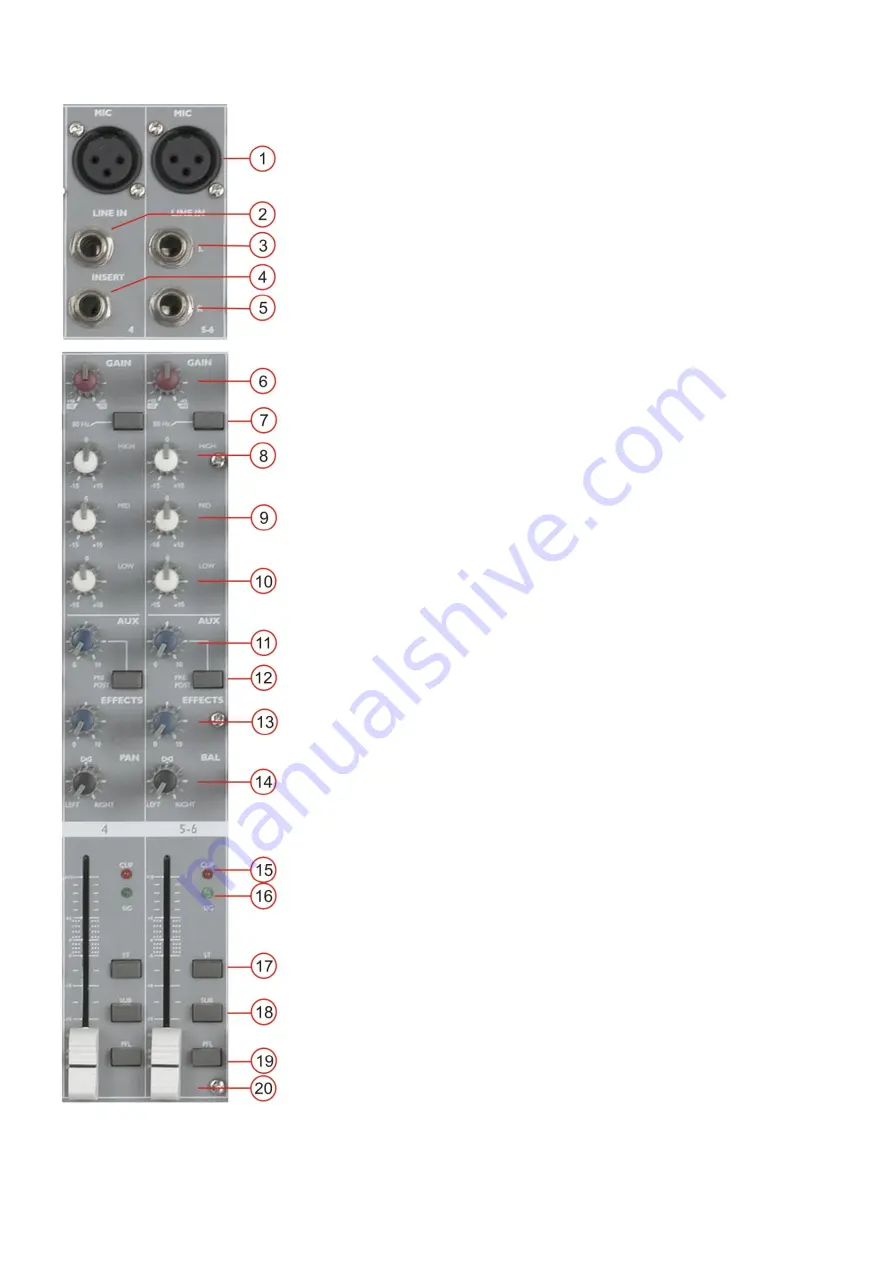
10
Functions
1. Mic
Electronically balanced XLR-type inputs for connecting low-
impedance microphones. The input provides extremely low noise
and low hum signal processing. When connecting a microphone
make sure that the pin assignment is correct. Always make sure to
read the manual of the microphone you want to connect. The XLR-
inputs are not suitable for connecting line level signals like an
additional mixing console, FX-unit, etc. You’ll have to use the
line (2)
inputs, when connecting this kind of equipment.
2. Line (mono channels only)
Electronically balanced inputs for connecting a keyboard, CD
player, mixer, etc. You can connect balanced or unbalanced
signal sources to the Line input. Do not connect signal devices to a
channel’s
mic (1)
and
line (2)
inputs at the same time. This will
cause mutual interference, which results in level reduction.
3/ 5. Line (stereo channels only)
Unbalanced stereo inputs for connecting a keyboard, CD player,
mixer, etc. You can connect unbalanced signal sources to the Line
input. When using a mono device, always connect it to the Left
(mono) input.
Note: When connecting signal sources, please make sure that the
corresponding channel faders and the master faders are at their
minimum settings. Otherwise plug-in noise can occur.
4. Insert
Insert for external device, effect, compressor etc. The insert jack
provides an output of the channels signal at line-level. At the same
time the insert has an input at line level from where the signal is
further routed through the channels equalizer and so forth. When
not in use (unplugged), input and output are connected to provide
normal signal flow in that channel
6. Gain
Input level is determined by the gain control. The gain control allows
you to adjust the
mic (1)
or
line (2,3,5)
input-sensitivity, while
optimally matching the incoming signals to the mixer’s internal
operation level. The high gain of this mixer is ideal when dealing
with very low input levels (i.e. vocal recordings or distant sound
sources).
How to set the input level:
1)
Set the
gain (6)
control and the corresponding channel fader to
their minimum settings.
2)
Connect the desired sound source (CD player, microphone, etc.)
to the corresponding
mic (1)
or
line (2,3,5)
input.
3)
Play the sound source at its highest volume setting; respectively,
sing or speak as loud as possible directly into the microphone.
4)
While doing so, adjust the input level using the
gain (6)
control, so
that during the loudest passages the
clip (15)
LED is just not lit.
This basic channel setting leaves you at least 8dB headroom. This
means, you have at least 8dB before signal clipping. If you want to
make further adjustments to the channel’s EQ setting, you should
repeat step
3
and
4
again.
Содержание GIG-12
Страница 1: ...GIG 12 ORDERCODE D2262 Highlite International B V Vestastraat 2 6468 EX Kerkrade The Netherlands...
Страница 22: ...20 Appendix 1 GIG 12 Block Diagram...
Страница 23: ......























